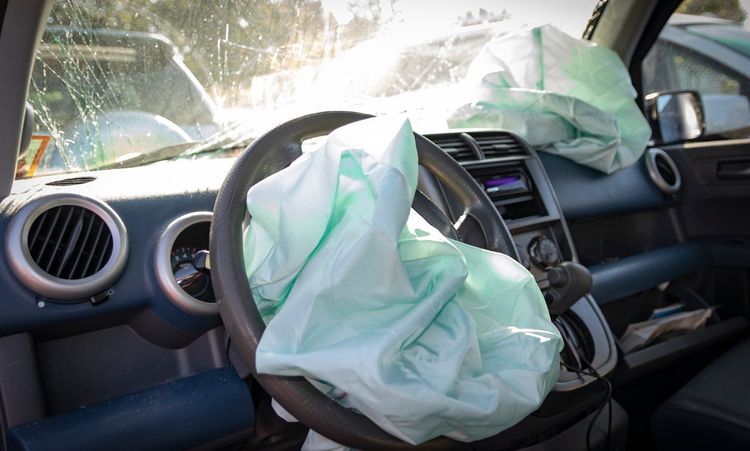That dreaded check engine light just popped up on your dashboard. Your heart sinks a little. After scanning the computer, you find code P0420 staring back at you. What now? Many drivers face this exact scenario every day. The P0420 code ranks among the most common trouble codes that vehicles display. You might worry about expensive repairs or wonder if your car is safe to drive. This article breaks down everything you need to know about the P0420 code. We'll explain what it means, why it happens, and how you might fix it without breaking the bank. Car problems never come at a good time. But understanding this specific code can save you money and stress in the long run.
What Does the P0420 Code Mean?
The P0420 code signals a problem with your vehicle's emissions system. Specifically, it means "Catalyst System Efficiency Below Threshold (Bank 1)." That's quite a mouthful! In plain English, your car's computer thinks the catalytic converter isn't cleaning exhaust gases properly. The catalytic converter works like a filter for harmful emissions. It transforms dangerous gases into less harmful substances before they exit your tailpipe. When functioning correctly, it converts carbon monoxide into carbon dioxide. It also handles unburned fuel and other pollutants your engine produces.
Your car constantly monitors this cleaning process through oxygen sensors. These sensors sit before and after the catalytic converter. They measure oxygen levels in the exhaust stream. The readings should differ if the converter works right. When the readings appear too similar, your car's computer throws the P0420 code. This doesn't always mean your catalytic converter has failed completely. Sometimes other issues trigger this code instead.
Bank 1 refers to the side of the engine that contains cylinder #1. In most cars, this means the front of the engine. In V-shaped engines, it typically means the passenger side bank of cylinders. Understanding this terminology helps pinpoint exactly where to look for problems. The P0420 code specifically targets this area of your vehicle's exhaust system.
What are the Possible Causes of the P0420 Code?
Several different issues can trigger the P0420 code in your vehicle. The most obvious culprit is a failing catalytic converter. These components normally last 100,000 miles or more. However, they can fail prematurely for various reasons. Engine misfires frequently damage catalytic converters. Bad fuel quality or oil consumption problems can also poison these sensitive components. A physically damaged converter from road debris might also trigger this code.
Faulty oxygen sensors represent another common cause. These sensors must provide accurate readings for your car's computer. When they age or fail, they might send incorrect signals. This confuses your car's computer into thinking the catalytic converter isn't working right. Oxygen sensors typically need replacement every 60,000-100,000 miles. Their performance gradually degrades over time. Replacing them often solves the P0420 issue without touching the more expensive converter.
Exhaust leaks frequently cause false P0420 codes too. Even small cracks or holes in your exhaust manifold or pipes matter. These leaks allow outside air to mix with exhaust gases. This additional oxygen confuses the sensors and triggers the code. Listen for unusual exhaust sounds or hissing noises. These might indicate a leak somewhere in the system. Loose connections between exhaust components can create similar problems.
Engine performance issues sometimes hide behind the P0420 code. Misfiring spark plugs, fuel injector problems, or incorrect fuel pressure all matter. These conditions create improper combustion. The unburned fuel damages the catalytic converter over time. Check for other engine codes that might appear alongside P0420. They often provide clues about the underlying issue. Fixing these problems might resolve the P0420 code as well.
What are the Common Symptoms of the P0420 Code?
The check engine light provides the most obvious symptom of a P0420 code. This warning light illuminates on your dashboard when the code triggers. Unlike some other engine codes, P0420 rarely causes immediate drivability problems. Your car will usually run normally despite the warning. This makes the issue easy to ignore, which many drivers unfortunately do. However, addressing it promptly prevents more expensive damage later on.
Reduced fuel economy often accompanies catalytic converter problems. You might notice your gas mileage dropping gradually. Keep track of how often you fill up. An inefficient converter makes your engine work harder. This increased workload burns more fuel during normal driving. The difference might seem small at first but adds up over time. Those extra trips to the gas station signal something isn't right.
Some drivers report a rotten egg smell from their exhaust. This distinctive sulfur odor indicates improper emissions processing. The smell comes from hydrogen sulfide that isn't properly converted. Healthy catalytic converters eliminate this odor completely. If you notice this smell, your converter likely has significant damage. Consider getting it checked soon before additional problems develop.
Performance issues sometimes develop as the problem worsens. Your engine might hesitate during acceleration. Some drivers notice rough idling or strange noises. Power output could decrease, especially during hill climbs or passing maneuvers. These symptoms typically appear gradually over time. They indicate the problem has progressed beyond the initial stages. At this point, addressing the underlying cause becomes more urgent.
How to Diagnose the P0420 Code
Proper diagnosis starts with verifying the code with an OBD-II scanner. These tools read the specific trouble codes stored in your car's computer. Make sure P0420 is actually present before proceeding further. Sometimes multiple codes appear together. Write down all codes for reference during your troubleshooting process. This information helps identify patterns pointing to the root cause. Auto parts stores often scan codes for free if you don't own a scanner.
Next, check your vehicle's maintenance history carefully. When was the last time you replaced spark plugs? How about oxygen sensors? Examine these records for clues about worn components. Many P0420 problems stem from overdue maintenance items. Regular maintenance prevents many catalytic converter issues before they start. If maintenance has been spotty, start with basic tune-up procedures first.
Test your oxygen sensors' operation using a scanner with live data capabilities. Watch how quickly they respond to engine speed changes. Healthy sensors show rapid voltage fluctuations. "Lazy" sensors respond slowly or show steady readings. Compare readings between the upstream and downstream sensors. They should show different patterns when the converter works properly. Similar readings often confirm a converter efficiency problem.
Performing a back-pressure test helps evaluate the converter's physical condition. Excessive back pressure indicates a clogged converter. This test requires special equipment available at most repair shops. A severely restricted converter creates engine performance problems. It might even prevent the engine from running altogether in extreme cases. This test rules out or confirms physical blockage issues.
Step 2 – Checking for and Resolving Exhaust System Leaks
Start your leak inspection at the exhaust manifold. This component connects directly to your engine. Look for cracks, warping, or loose bolts around this area. Heat cycles frequently cause problems here. Run your fingers carefully along seams while the engine is cold. Feel for rough edges or gaps that shouldn't exist. Tighten any loose bolts you discover during this inspection. Next, examine all connections between exhaust components. Pay special attention to the joints between pipes. These connection points frequently develop leaks over time. Look for black soot marks around joints. These indicate escaping exhaust gases. Also check gaskets and flex pipes for damage. Replace any compromised components before moving forward. Small leaks cause big headaches with emissions codes.
A simple smoke test often reveals hidden exhaust leaks. This procedure introduces smoke into the exhaust system. The smoke escapes through any existing cracks or holes. Watch carefully for smoke emerging from unexpected places. This visual indication makes finding leaks much easier. Many repair shops offer this service at reasonable prices. Consider this test if visual inspection doesn't reveal obvious problems.
Proper repair of exhaust leaks requires appropriate materials and techniques. Use high-temperature gaskets designed for exhaust systems. Apply exhaust sealer only when recommended by repair manuals. Ensure all connections receive proper torque when reassembling components. Improper repairs often fail quickly under extreme heat conditions. Follow manufacturer specifications for best results. Allow repaired sections to cure completely before testing.
Step 3 – Check Cylinder Imbalance
Cylinder imbalance often hides behind P0420 codes. This condition happens when cylinders produce uneven power. Use a compression test to check each cylinder's health. The readings should fall within 10% of each other. Lower readings indicate potential problems. Record the numbers from each cylinder for comparison. This test provides valuable information about your engine's internal condition. Low compression damages catalytic converters quickly.
Perform a cylinder contribution test using a scan tool. This shows how much each cylinder adds to overall engine power. Underperforming cylinders create incomplete combustion problems. They send unburned fuel into the exhaust system. This raw fuel damages catalytic converters over time. Identifying weak cylinders helps address the root cause. Fix these issues before replacing expensive emissions components.
Fuel injector problems frequently cause cylinder imbalance. Test each injector's spray pattern and flow rate. Clogged or leaking injectors create combustion problems. Clean or replace faulty injectors as needed. Proper fuel delivery ensures complete combustion in each cylinder. This prevents raw fuel from reaching the catalytic converter. Balance between cylinders protects your emissions system from damage.
Look for intake leaks that might create imbalance between cylinders. Vacuum leaks allow unmetered air into specific cylinders. This disrupts the carefully calculated air-fuel mixture. Use a smoke machine or spray carb cleaner around suspected areas. Listen for changes in engine sound when spraying. These changes indicate a leak at that location. Fix any leaks before concluding your diagnosis.
Step 4 – Check Spark Plugs
Remove and inspect all spark plugs carefully. Their condition tells a story about your engine's health. Normal plugs show light tan or gray deposits. Oil-fouled plugs appear wet and black. Fuel-fouled plugs have dry, sooty deposits. Broken electrodes or unusual wear patterns indicate other problems. Take photos of each plug for comparison. Note which cylinder each plug came from during removal.
Pay attention to different appearances between plugs. They should look roughly similar. Variations suggest problems in specific cylinders. A single oil-fouled plug might indicate a bad valve seal. One overheated plug might suggest a lean condition in that cylinder. These cylinder-specific issues often contribute to P0420 codes. Address these underlying problems before condemning the catalytic converter.
Check the spark plug gap on all plugs. Incorrect gaps cause incomplete combustion. Use a feeler gauge to measure precisely. Compare your findings with specifications in your repair manual. Adjust gaps as needed before reinstallation. Proper gaps ensure complete fuel burning during each combustion cycle. This protects your catalytic converter from damage over time. Consider upgrading to higher-quality spark plugs during replacement. Platinum or iridium plugs last longer than standard copper plugs. They maintain proper performance throughout their service life. The small additional cost often pays off through better engine performance. Higher-quality plugs burn fuel more completely. This reduces strain on your catalytic converter and other emissions components.
Conclusion
The P0420 code indicates a potential emissions system problem in your vehicle. While often blamed on catalytic converter failure, multiple issues can trigger this code. Oxygen sensor problems, exhaust leaks, and engine performance issues frequently cause false positives. Proper diagnosis involves methodically checking each possibility. This approach saves money by preventing unnecessary parts replacement. Follow the steps outlined above for best results.
Address P0420 codes promptly rather than ignoring them. Continued driving with this issue risks additional damage. The catalytic converter represents one of the most expensive emissions components. Protecting it makes financial sense for every vehicle owner. Regular maintenance prevents many P0420 scenarios before they develop. Keep up with scheduled services to avoid these problems altogether.
Remember that emissions systems protect both your car and the environment. These components reduce harmful pollutants released during driving. Proper function ensures your vehicle passes emissions tests required in many areas. It also maintains optimal fuel efficiency during daily operation. Taking care of P0420 codes serves multiple purposes beyond just turning off that check engine light.




